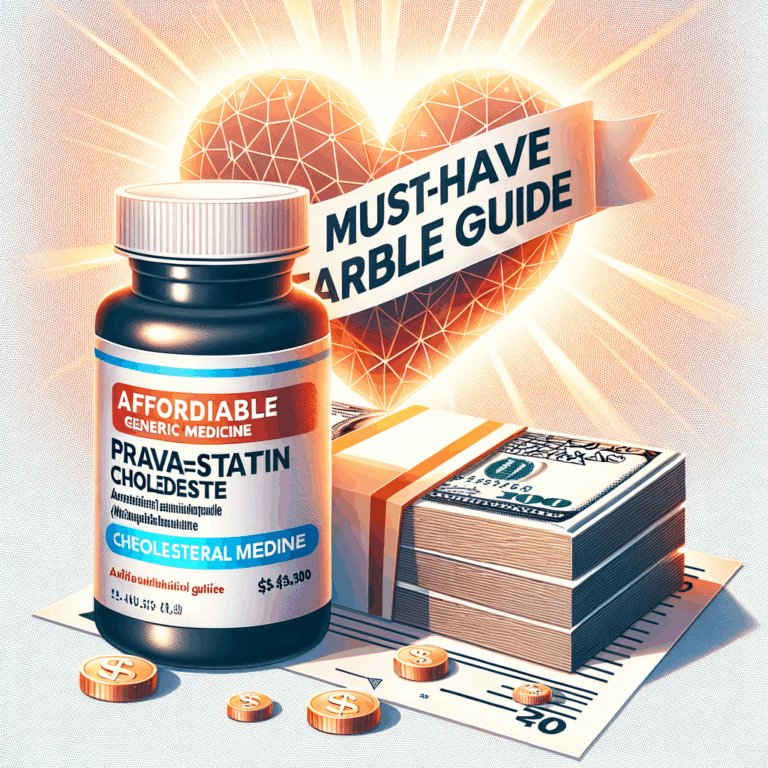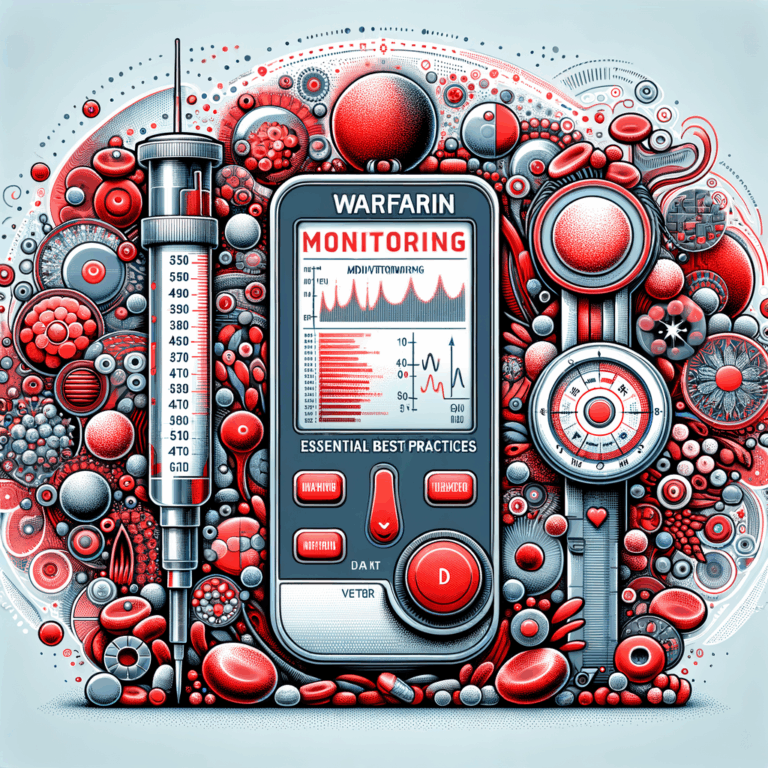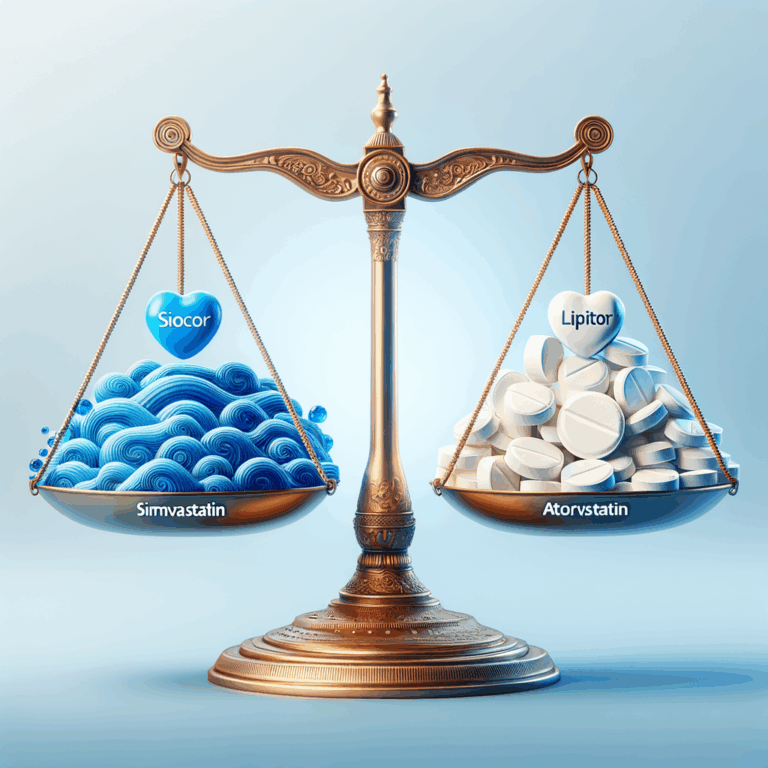
- Understanding Heart Failure and Why Treatment Matters
- What Is Carvedilol?
- How Carvedilol Works in Heart Failure Treatment
- Clinical Evidence: Why Carvedilol Is Proven
- Who Benefits Most from Carvedilol?
- Starting Carvedilol: What to Expect
- Proper Dosing and Titration
- Common Side Effects and How to Manage Them
- When to Alert Your Doctor
- Drug Interactions and Safety Considerations
- Carvedilol vs. Other Beta-Blockers
- Combining Carvedilol with Other Heart Failure Medicines
- Lifestyle Measures That Enhance Carvedilol’s Effect
- Monitoring and Follow-up During Treatment
- Common Myths and Misconceptions
- Cost, Access, and Generic Options
- Real-World Patient Experiences
- Special Considerations: Older Adults and Comorbidities
- When Carvedilol Might Not Be Right
- How to Talk to Your Doctor About Carvedilol
- Tips for Adherence and Daily Routines
- Emerging Research and Future Directions
- Quick Reference Table: Key Facts About Carvedilol
- Practical Checklist Before Starting Carvedilol
- Conclusion: Why Carvedilol Is a Must-Have Option
- Frequently Asked Questions (FAQs)
- 1. How quickly does carvedilol start to help symptoms?
- 2. Can carvedilol cure heart failure?
- 3. Is carvedilol safe to take with diabetes?
- 4. What if I forget a dose?
- 5. Can I drive while taking carvedilol?
- 6. How long will I need to take carvedilol?
- 7. Does carvedilol affect sexual function?
- 8. Can carvedilol cause weight gain?
- 9. Are there dietary restrictions while on carvedilol?
- 10. What tests will my doctor use to monitor carvedilol’s effect?
- References
Understanding Heart Failure and Why Treatment Matters
Heart failure affects millions worldwide. It occurs when the heart cannot pump blood efficiently. Consequently, organs and tissues receive less oxygen and nutrients. People with heart failure often feel tired, short of breath, or swollen.
Prompt treatment improves survival and quality of life. Doctors use medicines, lifestyle changes, and devices to manage symptoms. Among medicines, carvedilol stands out as a proven option. In the sections below, I’ll explain carvedilol’s role in heart failure treatment and why it matters.
What Is Carvedilol?
Carvedilol belongs to a class called beta-blockers. It works differently than older beta-blockers because it also blocks alpha receptors. As a result, carvedilol reduces heart rate, lowers blood pressure, and eases strain on the heart. These combined effects help the heart pump more efficiently.
Doctors usually prescribe carvedilol when patients show symptoms of chronic heart failure or reduced ejection fraction. They often pair it with other heart-failure medicines. Importantly, carvedilol also improves long-term outcomes, not just symptoms.
How Carvedilol Works in Heart Failure Treatment
Carvedilol blocks beta-1 and beta-2 receptors in the heart. By doing so, it slows the heart rate and reduces the force of contraction. Consequently, the heart uses less oxygen and works more efficiently. This helps relieve symptoms like shortness of breath and fatigue.
Additionally, carvedilol blocks alpha-1 receptors in blood vessels. This action causes vessels to relax and widen. As a result, carvedilol lowers afterload—the resistance the heart must overcome to pump blood. Lower afterload eases the heart’s workload further and improves circulation.
Clinical Evidence: Why Carvedilol Is Proven
Clinical trials show carvedilol improves survival in heart failure patients. For example, large randomized studies demonstrated fewer hospitalizations and lower mortality. These results influenced major treatment guidelines worldwide. Therefore, clinicians consider carvedilol a cornerstone therapy.
Moreover, researchers found carvedilol better preserves heart function than some older agents. It helps reverse harmful changes in the heart structure, a process called remodeling. Over time, this effect supports better exercise tolerance and daily function.
Who Benefits Most from Carvedilol?
Doctors typically use carvedilol for patients with heart failure and reduced ejection fraction (HFrEF). This group has a weakened pumping ability. Carvedilol offers clear benefits for these patients by improving survival and symptoms.
However, clinicians may also offer carvedilol to some people with preserved ejection fraction if other conditions are present. For example, carvedilol can help those with high blood pressure or arrhythmias. Still, doctors tailor treatment to each person’s needs and health profile.
Starting Carvedilol: What to Expect
Clinicians usually start carvedilol at a low dose. They then increase it gradually, typically every two weeks. This slow titration reduces side effects like dizziness or low blood pressure. Patients should follow dosing instructions closely.
During the start-up period, doctors monitor blood pressure, heart rate, and symptoms. They may also check weight and kidney function. Regular follow-up allows safe dose adjustments and ensures the medicine delivers benefit.
Proper Dosing and Titration
Dosing depends on factors like age, weight, and other medicines. Common initial doses are small. For example, doctors often start 3.125 mg twice daily. They then move to 6.25 mg, then 12.5 mg, and so on until they reach the target dose.
Target doses vary by condition. For many adults, the goal is 25 mg twice daily. For people under 85 kg, the target may be 12.5 mg twice daily. Careful titration ensures patients receive effective doses with fewer side effects.
Common Side Effects and How to Manage Them
Carvedilol can cause side effects, as do most medicines. Common ones include dizziness, fatigue, and low blood pressure. Some people also experience mild stomach upset or weight gain. Usually, these effects lessen over time.
To manage dizziness, stand up slowly from sitting or lying positions. Also, follow your doctor’s advice about fluid intake and salt. If fatigue persists, speak with your clinician before changing your dose. Never stop carvedilol suddenly, because that can worsen symptoms.
When to Alert Your Doctor
Contact your clinician if you experience signs of low blood pressure, such as lightheadedness or fainting. Also call if you notice worsening shortness of breath, sudden swelling, or irregular heartbeat. These signs may signal the need for a dose change or further evaluation.
Additionally, report signs of allergic reaction, like rash or swelling. If you have severe dizziness, fainting, or chest pain, seek immediate emergency care. Timely communication helps prevent complications and ensures safe treatment.
Drug Interactions and Safety Considerations
Carvedilol interacts with several common medicines. For example, combining carvedilol with other blood pressure medicines may lower pressure too much. Also, some diabetes drugs and heart rhythm medicines can interact. Therefore, give your doctor a full list of medicines and supplements.
Further, carvedilol can mask signs of low blood sugar in people with diabetes. This makes glucose monitoring crucial. Pregnant or breastfeeding people should discuss risks and benefits with their clinician.
Carvedilol vs. Other Beta-Blockers
Carvedilol differs from traditional beta-blockers. While many beta-blockers block beta receptors only, carvedilol also blocks alpha-1 receptors. This additional effect helps lower blood pressure and reduce afterload. Consequently, carvedilol often offers broader benefits for heart failure.
In some studies, carvedilol showed superior outcomes versus older beta-blockers. Yet, individual response varies. Doctors choose the best beta-blocker based on patient factors and comorbidities. Thus, carvedilol is a common, but not the only, option.
Combining Carvedilol with Other Heart Failure Medicines
Effective heart failure management usually involves multiple medicines. For instance, patients often take ACE inhibitors or ARBs, diuretics, and mineralocorticoid receptor antagonists. In many cases, clinicians also add SGLT2 inhibitors today. Carvedilol fits into this regimen by reducing heart rate and improving function.
When combined appropriately, these medicines reduce hospitalizations and improve survival. Doctors sequence additions and monitor for interactions and side effects. Therefore, patients should follow the comprehensive plan and attend follow-up appointments.
Lifestyle Measures That Enhance Carvedilol’s Effect
Medication works best alongside healthy habits. First, follow a heart-healthy diet low in salt. Reducing salt helps limit fluid buildup and swelling. Second, stay active within your limits. Walking or light exercise strengthens the heart and improves stamina.
Third, avoid smoking and limit alcohol. Both harm heart function and interfere with medicines. Finally, monitor your weight daily to spot fluid buildup early. Report quick weight gains to your medical team so they can adjust treatment.
Monitoring and Follow-up During Treatment
Regular monitoring improves safety and outcomes. Doctors check blood pressure, heart rate, and symptoms frequently at first. They may also assess kidney function and electrolytes. Over time, visits may space out if your condition stabilizes.
Additionally, your team might use echocardiograms to track heart function. These tests show whether carvedilol helps reverse remodeling. If tests show improvement, your clinician may continue the regimen or adjust doses.
Common Myths and Misconceptions
Myth: “Beta-blockers always make you too tired to function.” Many people tolerate carvedilol well. Initially, some fatigue may occur, but it often fades. Moreover, carvedilol improves long-term energy by reducing heart strain.
Myth: “You must stop carvedilol once you feel better.” Never stop without medical advice. Abrupt cessation can worsen heart symptoms and cause rebound effects. Always follow a clinician’s plan to taper if needed.
Cost, Access, and Generic Options
Carvedilol has generic alternatives widely available. Generic versions lower cost for many patients. Insurance plans often cover carvedilol, but coverage varies. If cost creates barriers, ask your provider about assistance programs.
Pharmacies also offer different formulations like tablets and extended-release versions. Check with your pharmacist for the most affordable option. Additionally, patient assistance foundations sometimes help with copays or supplies.
Real-World Patient Experiences
Many patients report meaningful symptom relief with carvedilol. They often describe better breath control during activities and less swelling. Over months, some people regain energy and resume everyday tasks.
At the same time, patients stress the importance of communication with their healthcare team. They say careful dose adjustments and monitoring made the difference. Therefore, staying engaged with your provider improves the likelihood of success.
Special Considerations: Older Adults and Comorbidities
Older adults may need lower starting doses and slower titration. They also face higher risks for low blood pressure or dizziness. Clinicians balance carvedilol benefits against potential risks in this group.
People with lung disease, diabetes, or kidney problems require tailored plans. For example, carvedilol may affect blood sugar awareness in diabetes. Your clinician will adjust doses and monitor closely to ensure safety.
When Carvedilol Might Not Be Right
Carvedilol may not suit people with certain conditions. For instance, severe asthma or marked bradycardia (very slow heart rate) may make it unsafe. Also, some patients cannot tolerate its side effects despite dose changes.
If carvedilol is not suitable, clinicians may choose other beta-blockers or alternate strategies. They will still aim to reduce symptoms and protect heart function with other proven options.
How to Talk to Your Doctor About Carvedilol
Prepare a list of symptoms and medicines before appointments. Ask about expected benefits, common side effects, and monitoring plans. Also, discuss how carvedilol fits with your lifestyle and other medications.
If you feel unsure, ask for written instructions and follow-up timelines. A clear plan helps you stick to treatment and recognize warning signs. Remember, you and your clinician make decisions together.
Tips for Adherence and Daily Routines
Set daily reminders to take carvedilol at the same times each day. Pair the doses with routine activities like meals or brushing teeth. Use pillboxes or smartphone apps to stay organized.
Keep a symptom diary and record your weight daily. Bring these notes to appointments so your clinician can adjust treatment. Good communication and simple routines improve adherence and outcomes.
Emerging Research and Future Directions
Researchers continue to study carvedilol in diverse patient groups. They examine combinations with newer heart-failure medicines and the drug’s effects on long-term remodeling. Scientists also explore personalized approaches to dosing.
Future studies may refine which patients benefit most from carvedilol. In addition, trials will assess carvedilol’s role alongside genomic and imaging tools. These advances may further tailor heart failure care in coming years.
Quick Reference Table: Key Facts About Carvedilol
| Topic | Information |
|---|---|
| Drug class | Beta-blocker with alpha-1 blockade |
| Common uses | Heart failure with reduced ejection fraction, hypertension, some arrhythmias |
| Typical start dose | 3.125 mg twice daily (varies) |
| Target dose | Often 25 mg twice daily (adjust per patient) |
| Common side effects | Dizziness, fatigue, low blood pressure, weight gain |
| Monitoring | BP, heart rate, kidney function, weight, symptoms |
Practical Checklist Before Starting Carvedilol
– List all current medicines, including OTC drugs and supplements.
– Note any history of asthma, severe lung disease, or bradycardia.
– Prepare questions about dosing, side effects, and monitoring.
– Arrange for follow-up visits and lab checks if needed.
– Set up medication reminders and a daily weight log.
Conclusion: Why Carvedilol Is a Must-Have Option
Carvedilol has proven benefits for many people with heart failure. It reduces symptoms, improves heart function, and lowers mortality. Importantly, clinicians tailor dosing and monitor patients to minimize risks.
When paired with lifestyle changes and other guideline-directed medicines, carvedilol contributes to better outcomes. If you or a loved one has heart failure, discuss carvedilol as part of a comprehensive plan. Together with your healthcare team, you can choose the safest and most effective path.
Frequently Asked Questions (FAQs)
1. How quickly does carvedilol start to help symptoms?
Carvedilol may improve symptoms within a few weeks. However, full benefits often take months. Doctors increase doses slowly to reduce side effects.
2. Can carvedilol cure heart failure?
Carvedilol cannot cure heart failure. Instead, it manages symptoms and slows disease progression. Many patients experience better quality of life and longer survival.
3. Is carvedilol safe to take with diabetes?
Carvedilol can be used in people with diabetes. However, it may mask low blood sugar symptoms like rapid heartbeat. Monitor glucose closely and discuss adjustments with your doctor.
4. What if I forget a dose?
If you miss a dose, take it as soon as you remember. If it’s almost time for the next dose, skip the missed one. Do not double up doses without medical advice.
5. Can I drive while taking carvedilol?
You can usually drive on carvedilol. Yet, if you feel dizzy or excessively tired, avoid driving until you feel safe. Discuss any concerns with your provider.
6. How long will I need to take carvedilol?
Many people take carvedilol long-term. Your doctor will reassess periodically. Do not stop treatment abruptly, as this may worsen symptoms.
7. Does carvedilol affect sexual function?
Some patients report changes in sexual function. However, response varies. Speak with your clinician if you notice any issues so they can offer solutions.
8. Can carvedilol cause weight gain?
Some people experience fluid retention or mild weight gain. Daily weight monitoring helps catch fluid buildup early. Discuss persistent weight changes with your doctor.
9. Are there dietary restrictions while on carvedilol?
No strict food bans exist, but avoid large amounts of alcohol. Also, follow a low-salt diet recommended for heart failure. Discuss specific restrictions with your clinician.
10. What tests will my doctor use to monitor carvedilol’s effect?
Doctors use blood pressure and heart rate checks, lab tests for kidney function and electrolytes, and echocardiograms. They also track symptoms and weight over time.
References
– McMurray JJ, et al. “ESC Guidelines for the diagnosis and treatment of acute and chronic heart failure.” European Heart Journal. https://academic.oup.com/eurheartj/article/41/36/431/5891555
– Packer M, et al. “Effect of carvedilol on survival in severe chronic heart failure.” The New England Journal of Medicine. https://www.nejm.org/doi/full/10.1056/NEJM199610103351701
– Yancy CW, et al. “2017 ACC/AHA/HFSA Focused Update on Heart Failure Management.” Journal of the American College of Cardiology. https://www.jacc.org/doi/10.1016/j.jacc.2017.04.025
– FDA Prescribing Information: Carvedilol. https://www.accessdata.fda.gov/drugsatfda_docs/label/2017/020352s052lbl.pdf
– The Heart Foundation: Beta blockers and heart failure. https://www.heart.org/en/health-topics/heart-failure/treatment-options-for-heart-failure/medication-for-heart-failure



